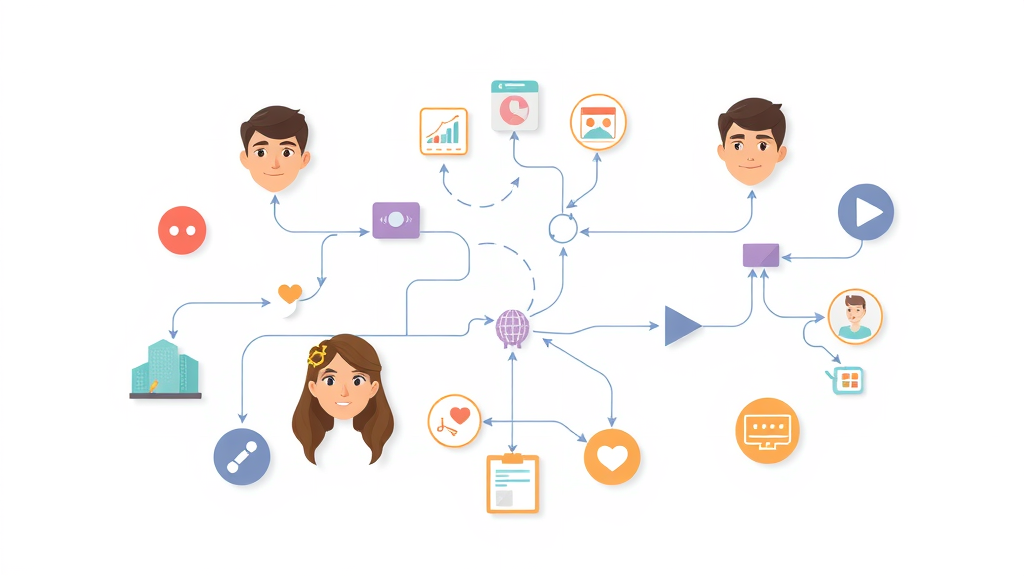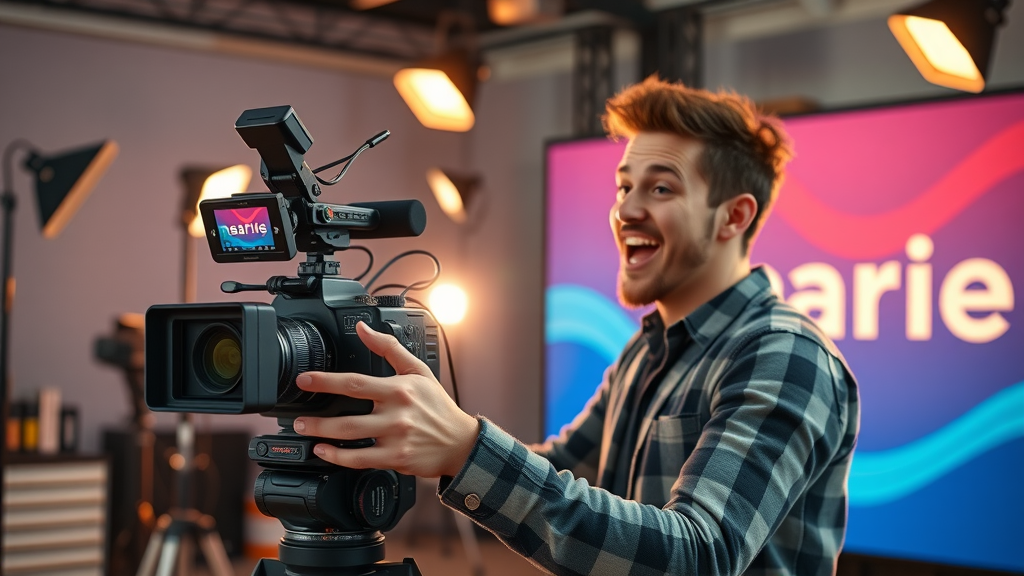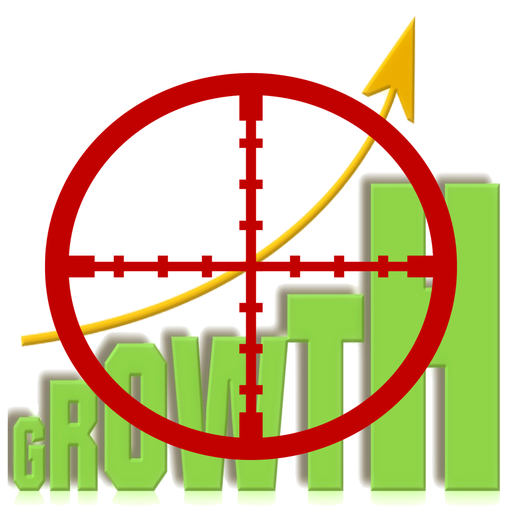Did you know that companies leveraging top digital marketing channels experience up to 2.8X revenue growth compared to those that don’t? According to the Harvard Business Review, 73% of consumers choose to shop for their purchases on more than one channel. In this guide, discover how the strategic use of diverse digital marketing channels can be the catalyst for tangible business results.

Maximizing Impact: Why Digital Marketing Channels Matter for Every Business
Learn the importance of digital marketing channels, how they shape online marketing success, and unlock growth through precise targeting.

In the fast-changing world of online marketing , the digital landscape provides virtually unlimited opportunities for growth, but only for brands that master the right digital marketing channels. These channels allow businesses to target their ideal audience with precision, deliver messages in real-time, and measure every response, resulting in far more agile and effective marketing campaigns. Digital marketing gives brands the ability to respond quickly—whether that's capitalizing on social media trends or launching a new paid ad campaign to support a product launch.
The reason marketing channels matter so much is simple: your potential customers are fragmented across a wide array of online spaces. Strategic use of digital marketing channels —from search engine optimization to social media marketing and beyond—ensures your products or services are where your target audience spends their time. For example, companies deploying digital marketing as a core part of their strategy consistently outperform their peers in brand awareness , engagement, and sales revenue. To unlock sustainable growth, choosing and optimizing your mix of digital channels is critical.
What You'll Gain from This Digital Marketing Channels Guide
The critical role of each digital marketing channel in modern marketing
How to select the most effective marketing channels for unique business goals
Powerful strategies to combine channels for maximum ROI
The ROI benchmarks for the top digital marketing channels
Actionable case studies and real-world data
Best practices for measuring and improving channel performance
Defining Digital Marketing Channels: Building Blocks of Online Success
What is a Digital Marketing Channel?
A breakdown of digital marketing channels, how they differ from traditional marketing channels, and why they’re essential for any marketing strategy.

Digital marketing channels are the online pathways businesses use to connect with potential customers—think search engine optimization (SEO), content marketing, social media marketing, paid ads, email marketing, affiliate marketing, and video marketing. Unlike traditional channels such as print, radio, or billboards, digital marketing allows for precise targeting, real-time measurement, and iterative improvements. The flexibility and scalability of digital channels are key to modern business growth.
Each digital marketing channel serves a unique purpose. SEO drives organic search traffic through search engines; content marketing builds authority and nurtures relationships; social media amplifies brand awareness in real time; and email marketing personalizes outreach at scale. Compared to a static billboard or a print ad, a digital channel enables businesses to tailor messages, retarget users, and optimize spend according to actual response data—making it an indispensable part of any marketing strategy.
How Digital Marketing Channels Change Customer Acquisition
Explore examples of customer journeys and the influence of each marketing channel.
Comparison of Traditional vs Digital Marketing Channels - Key Metrics and Outcomes |
||
Metric |
Traditional Channels |
Digital Marketing Channels |
|---|---|---|
Targeting Precision |
Demographic/geographic, less granular |
Behavioral, contextual, real-time data-driven |
Measurability |
Limited, delayed reporting |
Full-funnel, real-time analytics, attribution tracking |
Cost Efficiency |
Higher upfront costs, fixed pricing |
Flexible budgets, cost-per-click/impression models |
Customer Engagement |
Passive, one-way |
Interactive, two-way, personalized messaging |
Adaptability |
Low, static campaigns |
High, agile optimization possible |

Digital marketing channels revolutionize how businesses acquire and retain customers by offering multiple touchpoints along the buyer’s journey. For instance, a potential customer might first discover your brand through a social media ad, research your product via organic search, and finally convert after receiving a targeted email. This interconnected pathway—often called an omnichannel journey—creates more chances to build relationships and move leads down the funnel.
Unlike traditional marketing, where attribution and impact can be hard to disentangle, modern digital marketing channels enable precise tracking of each interaction. By mapping customer journeys, marketers can identify which channels have the highest influence on conversions, optimize their marketing budget, and personalize future campaigns. Real-world data consistently shows that businesses utilizing diverse marketing channels ultimately secure more loyal customers and higher lifetime value.
Key Digital Marketing Channels: An In-depth Overview
Search Engine Optimization (SEO): Maximizing Organic Reach through Digital Marketing Channels
The importance of search engine optimization in increasing visibility
Best practices for leveraging SEO as a primary digital marketing channel
ROI benchmarks for engine optimization

Search engine optimization (SEO) is the art and science of positioning your brand at the top of search engine results. As a critical digital marketing channel , SEO drives organic traffic, increases brand awareness , and provides long-term value with sustainable results. Think of SEO as the digital equivalent of high-traffic storefront placement—except in the online world, you can measure every click, query, and conversion.
Best practices for SEO include building relevant content optimized for carefully researched keywords, ensuring your website offers a seamless user experience, and securing credible backlinks to enhance trust for both users and search engines. Real-world ROI benchmarks show that SEO generates an average return of $22 for every $1 invested over time, making it one of the most cost-effective digital marketing channels. Brands like Moz and HubSpot have scaled through organic search by relentlessly optimizing their content and site structure to target audiences searching for their products and services.
Content Marketing: Driving Engagement with Value-Packed Digital Marketing Channels
High-performing content types for various target audiences
The role of content in nurturing leads and enhancing brand awareness
Measurable ROI of content marketing channels
Content marketing is about delivering informative, entertaining, or inspiring material to your target audiences with the aim of both educating and nurturing leads. Modern content marketing goes far beyond blog posts: case studies, infographics, ebooks, podcasts, videos, and even interactive tools are high-impact options that cater to different stages of the buyer journey. The goal is always the same—move your audience from awareness to trust and, ultimately, to conversion.
Measuring the ROI of content marketing channels can be intricate, but the returns speak for themselves. HubSpot notes that businesses with active blogs see 67% more leads monthly than those who do not. The best results come when content marketing is paired with other channels—such as promoting articles on social media or integrating lead magnets with email marketing. In today’s digital marketing landscape, high-value, audience-focused content cements your brand as an authority and drives compounding returns over time.
Social Media Marketing: Real-Time Connections in Digital Marketing Channels
Choosing social media platforms for your target audience
Tactics for social media marketing that build brand awareness and loyalty
Social media ROI statistics

Social media marketing is a digital marketing channel that lets brands connect with their audience on platforms like Facebook, Instagram, LinkedIn, TikTok, Twitter, and more. The magic lies in selecting the right platforms—each social media platform attracts unique demographics, and matching your brand’s voice to the audience ensures your content resonates. Regular posting, engaging comments, and interactive campaigns fuel brand awareness and loyalty.
Winning tactics include using video reels, collaborating with micro-influencers, leveraging hashtag campaigns, and running targeted paid ads for laser-sharp audience segmentation. The ROI on social media marketing is impressive: businesses report that 73% of their marketing campaign budget spent on social ads yields direct results in increased web visits and sales. Integrating social metrics with your other marketing channel data helps reveal which audiences are most engaged and where to double down for growth.
Email Marketing: Nurturing Leads with Personalized Digital Marketing Channels
Types of email campaigns and segmentation strategies
Proven conversion tactics for online marketing success
Email marketing ROI facts

Email marketing stands out as one of the most powerful and cost-efficient digital marketing channels. Using finely tuned segmentation, brands can create highly relevant campaigns for each subscriber group—such as welcome sequences for new users, exclusive offers for loyal customers, and re-engagement messages for dormant email lists. The magic is in the personalization: campaigns tailored to recipient interests routinely see higher open and conversion rates.
Proven strategies include A/B testing subject lines, sending triggered emails based on user behaviors, and integrating emails with your content and social media marketing for a cohesive customer journey. According to DMA, email marketing delivers an average ROI of $42 for every $1 spent. Regularly refining your email campaigns based on analytics ensures consistent performance and keeps your online marketing channel at peak efficiency.
Paid Advertising (PPC & Display Ads): Immediate Impact Digital Marketing Channels
Types of paid ads: search, display, social
Evaluating cost-per-acquisition across paid marketing channels
Advantages of integrating paid advertising in your digital marketing strategy
Side-by-Side Metrics: Cost, Reach, and ROI for Top Digital Marketing Channels |
||||
Channel |
Average CPC |
Average CPA |
Reach Potential |
Average ROI |
|---|---|---|---|---|
SEO |
$0 (organic) |
$35 |
Very High |
22:1 |
PPC (Google Ads) |
$1.50 |
$50 |
High |
2:1–4:1 |
Social Media Ads |
$0.97 |
$45 |
High |
3:1 |
Email Marketing |
$0.10 |
$10 |
Medium |
42:1 |
Display Ads |
$0.67 |
$30 |
Medium |
2:1 |
Affiliate Marketing |
Performance-based |
$40 |
Medium-High |
15:1 |

Paid advertising —including PPC (pay-per-click) and display ads—is unmatched for creating immediate exposure and driving targeted traffic. Platforms like Google Ads, Facebook Ads, and LinkedIn Ads let you control budgets on a granular level and target by demographics, behaviors, and interests. With features like retargeting and detailed audience insights, you can maximize every marketing dollar.
When evaluating cost-per-acquisition (CPA), it’s important to weigh the reach and budget flexibility against other channels. For example, while PPC may carry a higher initial cost than SEO, it offers near-instant results—which is critical for time-sensitive promotions or scaling fast. Combining paid ads with organic strategies ensures constant visibility and accelerates growth. Review your ad data, test creative approaches, and let analytics guide your campaign optimizations for scalable, sustainable impact.
Affiliate Marketing: Expanding Reach Through Trusted Digital Marketing Channels
Best practices for affiliate marketing channel selection
Monitoring affiliate ROI and managing partnerships
Success stories from affiliate-driven marketing strategies
Affiliate marketing leverages the power of partnerships, enabling brands to reach new audiences through trusted advocates and influencers. This digital marketing channel is especially popular in ecommerce and software sectors, where third-party affiliates promote your products and services in return for a commission on each sale. By tapping into established audiences, affiliate marketing offers both reach and credibility.
Best practices include choosing reputable affiliate networks, setting clear commission structures, and maintaining transparent communication with your partners. Brands should establish robust tracking mechanisms to measure ROI—for example, using unique links or discount codes. Notably, companies such as Amazon have built entire ecosystems around affiliate marketing and regularly attribute a significant percentage of their sales to this channel. Success here depends on ongoing relationship management and an unwavering focus on channel attribution and payout efficiency.
Video Marketing: Visual Power in the Digital Marketing Channels Landscape
The explosive growth of video content in online marketing
Integrating video with other digital marketing channels
ROI metrics for video campaigns

Video marketing is exploding in popularity, with platforms like YouTube, Instagram, and TikTok at the forefront of media consumption trends. Brands using video marketing as a primary digital marketing channel consistently see higher engagement rates and enhanced brand awareness. Short-form videos, tutorials, testimonials, and live streams capture audiences that prefer visual content, making it easier to deliver persuasive messages.
The key to maximizing ROI is integrating video content with other channels—sharing videos via social media platforms , embedding them in blog posts, or using them in email campaigns. According to Wyzowl’s State of Video Marketing, 87% of video marketers report positive ROI, with users 84% more likely to buy a product after watching a brand video. Investing in video pays dividends when it’s authentic, concise, and tailored to the interests of your target audience.
Selecting the Right Digital Marketing Channel: A Strategic Approach
Aligning Your Marketing Strategy with Business Goals
Understanding your target audience and market
How budget, resources, and objectives inform marketing channel selection
"The best digital marketing channels for you depend on where your customers spend their time and how they prefer to interact with brands."
The secret to choosing the right digital marketing channel is alignment—your marketing strategy must be rooted in business objectives, available resources, and a deep knowledge of your target audience. Start with research: explore which platforms your audience frequents, the forms of content that resonate, and their buying behaviors. Next, honestly audit your budget and team strength: some channels are resource-intensive (like video or SEO), while others (like paid ads) can be launched quickly with a smaller internal team.
For example, B2B brands often find success by investing in LinkedIn ads and in-depth blog content, while ecommerce brands perform well with Instagram influencers and paid ad campaigns. Map each channel to a specific goal—brand awareness, lead generation, conversions, or loyalty—and allocate resources accordingly. Test, measure, and optimize regularly to ensure your marketing strategy keeps pace with business growth and changing customer preferences.
Smart Combinations: Multi-Channel Digital Marketing Strategies
Benefits of cross-channel marketing and attribution tracking
Case examples of brands excelling with multi-channel approaches
Optimal Digital Marketing Channel Mix for Different Business Models |
||
Business Model |
Primary Channels |
Secondary Channels |
|---|---|---|
B2B SaaS |
SEO, Content Marketing, LinkedIn Ads |
Email Marketing, Video, Affiliate |
Ecommerce |
Paid Social, Google Ads, Email Marketing |
SEO, Influencer Marketing, Video |
Local Services |
Local SEO, Google My Business, PPC |
Social Media, Email, Affiliate Referrals |
Consulting/Education |
Content Marketing, YouTube, SEO |
Email Marketing, Paid Social, Webinars |

Harnessing multiple digital marketing channels together amplifies results—customers interact with brands in different ways before ever making a purchase. Using a multi-channel strategy ensures you meet your audience wherever they are. For instance, a B2C brand might combine Instagram stories, Facebook ads, and email campaigns for a product launch, while a SaaS startup could use SEO, webinars, and LinkedIn outreach to nurture leads.
Cross-channel attribution is crucial for understanding which touchpoints deliver conversions. Leading brands like Nike and Airbnb excel by using analytics to monitor the holistic performance of their integrated campaigns, reallocating budget from underperforming marketing channels and scaling what works. Successful multi-channel marketing requires sophisticated planning, regular review, and adaptation to both market trends and internal business data.
Metrics That Matter: Measuring ROI for Each Digital Marketing Channel
Key performance indicators for marketing channels
Tools and frameworks to measure multi-channel ROI

To truly optimize your digital marketing channels , focus on the metrics that move the needle. Key performance indicators (KPIs) for each channel may include organic traffic (SEO), engagement rates (social media marketing), open/click rates ( email marketing ), cost-per-acquisition (PPC), and conversion value (affiliate marketing). A unified dashboard, like Google Analytics or HubSpot, helps consolidate channel data and delivers a big-picture view.
Leading brands measure multi-channel ROI using attribution models (first-touch, last-touch, linear, or data-driven) to determine what combination produced the conversion. Custom UTM parameters, conversion goals, and call tracking help ensure no touch is missed. Regular review and iteration—paired with actionable insights—will allow your marketing team to reallocate spend and refine your marketing strategy for the greatest impact.
Challenges and Best Practices in Optimizing Digital Marketing Channels
Overcoming fragmentation and channel silos
Continuous testing and agile adaptation
Adapting to evolving online marketing trends

One of the biggest challenges in online marketing today is the risk of fragmentation. When each team focuses on their own marketing channel in isolation, brands lose sight of the integrated customer journey. Siloed data and disjointed messaging not only hurt ROI—they diminish the overall brand awareness and customer experience. Overcoming these challenges requires intentional collaboration, shared analytics, and a culture of transparency.
The solution is to implement continuous testing cycles, such as A/B testing landing pages, creative assets, and channel combinations. Agile marketing teams rapidly adapt strategies based on live data and external trends—whether it’s a new social media platform or changes to search engine algorithms. Staying ahead of the curve ensures your digital marketing channels consistently deliver the highest possible ROI, regardless of shifting market conditions.
People Also Ask: Essential Digital Marketing Channels Questions Answered
What are the channels of digital marketing?
Digital marketing channels include SEO, content marketing, social media marketing, email marketing, affiliate marketing, paid advertising, and video marketing.
What are the 4 types of digital marketing?
The 4 main types are SEO, content marketing, social media marketing, and email marketing.
What are the 4 marketing channels?
The 4 marketing channels usually refer to direct, indirect, dual distribution, and reverse channels, but in digital marketing they often mean SEO, social, email, and paid advertising.
What are the top 7 types of digital marketing?
Top Industry Insights: Quotes from Digital Marketing Channel Experts
"Omni-channel digital marketing delivers higher customer engagement—companies outperform competitors by 89% in customer retention when leveraging multiple digital marketing channels effectively."
"Every marketing channel requires unique KPIs—measuring the right metrics is key to driving sustainable ROI."
Best Practice Checklist: Ensuring Success Across All Digital Marketing Channels
Identify your business goals and target audience
Select primary and secondary marketing channels
Define success metrics for each digital marketing channel
Implement cross-channel analytics
Continually optimize for ROI
Frequently Asked Questions about Digital Marketing Channels
How do digital marketing channels differ from traditional marketing?
Digital marketing channels use real-time data, precise targeting, and measurable performance, while traditional channels are static and less personalized. Digital marketing allows for faster feedback, agile optimization, and omnichannel approaches that integrate several touchpoints for higher engagement and effectiveness.Can small businesses benefit from multiple marketing channels?
Absolutely! Even with limited budgets, small businesses can combine low-cost options (such as social media and email marketing) with local SEO for major gains in visibility and engagement. The key is to prioritize channels that fit their audience and measure impact to optimize investments.What is channel fatigue and how can it be prevented?
Channel fatigue occurs when audiences are bombarded by repetitive or irrelevant messages across several marketing channels. Prevent it by focusing on high-value content, personalizing communication, and properly segmenting your audience to ensure variety and relevance across touchpoints.How often should you review your digital marketing channel mix?
Ideally, brands should assess their digital marketing mix at least quarterly. This allows for timely adjustments to strategy, adoption of new platforms, and improvement of weak channels while doubling down on those delivering the strongest results.
Essential Takeaways: Choosing the Right Digital Marketing Channels to Deliver Real ROI
No single digital marketing channel fits all—balance is key
Tie channel choice directly to audience and objectives
Measurement and optimization are ongoing
Ready to Elevate Your Results? Optimize Your Digital Marketing Channels Today
Take your next step: Review your current channel performance, identify quick wins, and experiment with a new platform or campaign to unlock new levels of growth.
Sources
To enhance your understanding of digital marketing channels and their impact on ROI, consider exploring the following authoritative resources:
Is your Marketing Just Limping Along? Would you like your strategies to Work Together Seamlessly and Effectively? Click this link to Download the “The Ultimate Small Business Cross-Channel Marketing Checklist”
“What Is Digital Marketing? Types and Examples” : This comprehensive guide from Investopedia provides an in-depth look at various digital marketing channels, including website marketing, pay-per-click advertising, content marketing, email marketing, and social media marketing. It offers clear definitions and examples to help you grasp how each channel functions and contributes to a successful marketing strategy. ( investopedia.com )
“10 Effective Digital Marketing Channels & How to Use Them” : Published by Semrush, this article delves into ten impactful digital marketing channels, such as email marketing and paid advertising. It provides practical insights on how to implement these channels effectively, including steps to get started and tips for optimizing performance. ( semrush.com )
By reviewing these resources, you’ll gain a broader perspective on the diverse digital marketing channels available and how to leverage them to achieve tangible business results.
 Add Row
Add Row  Add
Add 




Write A Comment